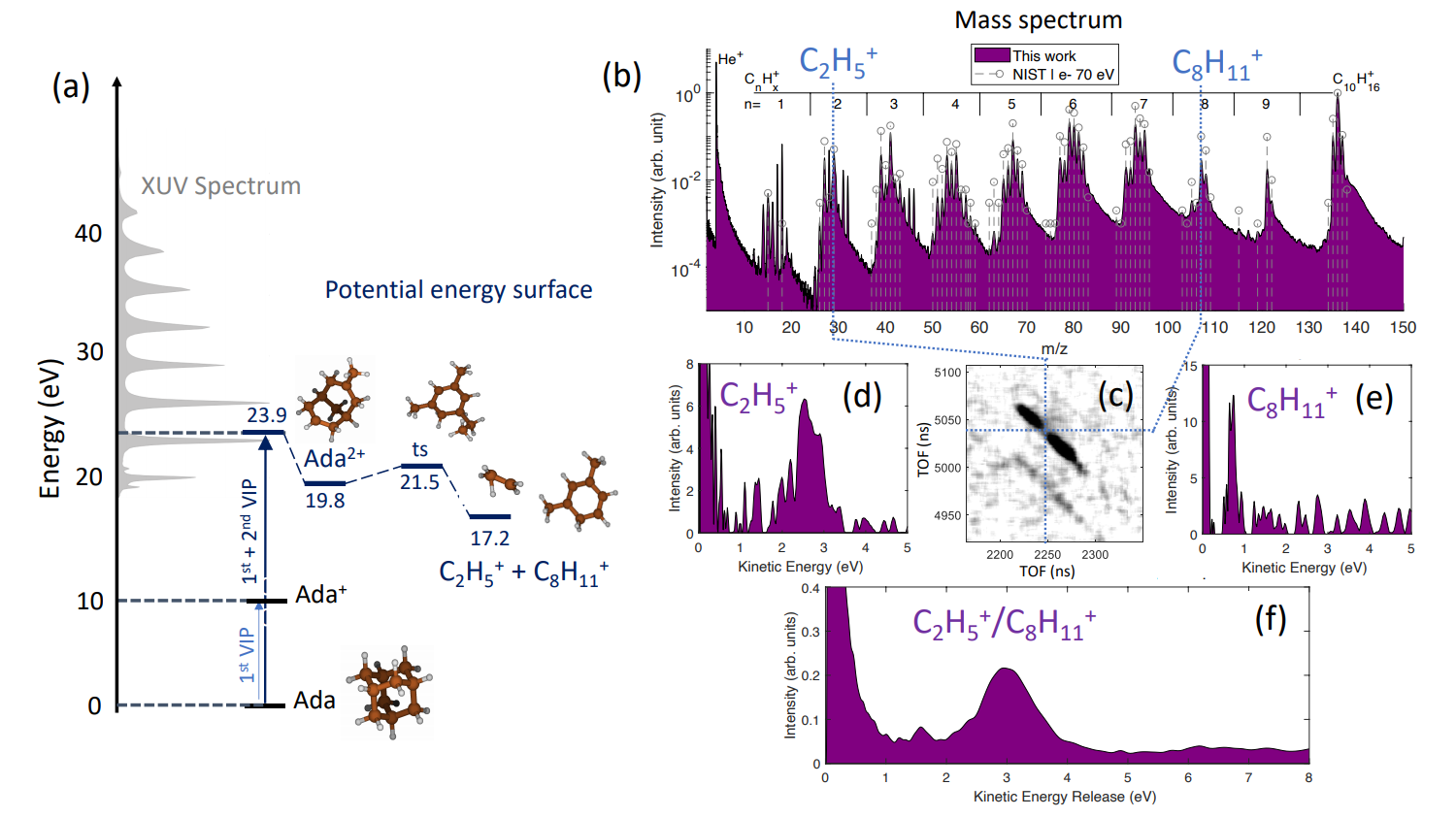Cage opening of the diamondoid adamantane:Â the dication's liberty!
[Bibtex]
@article{
author = {Sylvain Maclot, Jan Lahl, Jasper Peschel, Hampus Wikmark, Piotr Rudawski, Fabian Brunner, Hélène Coudert-Alteirac, Suvasthika Indrajith, Bernd A. Huber, Sergio Díaz-Tendero, Néstor F. Aguirre, Patrick Rousseau and Per Johnsson},
title = {Dissociation dynamics of the diamondoid adamantane upon photoionization by XUV femtosecond pulses},
journal = {Scientific Reports},
volume = {10},
number = {2884},
abstract = {This work presents a photodissociation study of the diamondoid adamantane using extreme ultraviolet femtosecond pulses. The fragmentation dynamics of the dication is unraveled by the use of advanced ion and electron spectroscopy giving access to the dissociation channels as well as their energetics. To get insight into the fragmentation dynamics, we use a theoretical approach combining potential energy surface determination, statistical fragmentation methods and molecular dynamics simulations. We demonstrate that the dissociation dynamics of adamantane dications takes place in a two-step process: barrierless cage opening followed by Coulomb repulsion-driven fragmentation.},
year = {2020},
type= {Article},
}- DOI number: 10.1038/s41598-020-59649-1
- Corresponding authors contact e-mails: sylvain.maclot@physics.gu.se and per.johnsson@fysik.lth.se
Adamantane is the prototypical diamondoid molecule, which due to its high stability is of high interest both in astrophysics and for nanotechnology. The molecule has a carbon cage terminated by hydrogen atoms and has the formula C10H16. We used femtosecond XUV pulses obtained via high-order harmonic generation to ionise adamantane. Most of the molecules were singly ionised and some doubly ionised. We measured the charged products of interaction by a double- sided velocity map imaging spectrometer enabling the collection of ion and electron momenta in a synchronous manner.
Combining multi-particle detection, covariance analysis and quantum chemistry calculations allowed us to show that the doubly charged adamantane molecule is metastable and will spontaneously dissociate. Thanks to the measured ion and electron kinematics combined with theoretical calculations we were able to discuss the internal energy distribution of the system and assess the energetic picture of the dication processes. As a result, we were able to demonstrate that, prior to dissociation, the cage structure of the dication will open and hydrogen migration(s) will occur (see figure).
Finally, we succeeded to get insight into the fragmentation dynamics of adamantane cations.

(b) Mass spectrum, exhibiting a multitude of fragmentation channels with single hydrogen resolution. The correlation between the produced photofragments is examined through extracted TOF-TOF covariance maps, with a zoom-in around the studied photoion pair in panel (c).
(d,e) Ion kinetic energy distributions of the two studied photoions extracted from TOF-VMI covariance images.
(f) Kinetic energy release distribution for the photoion pair that helped us confirming that the two-body Coulomb explosion resulted from an open cage geometry.